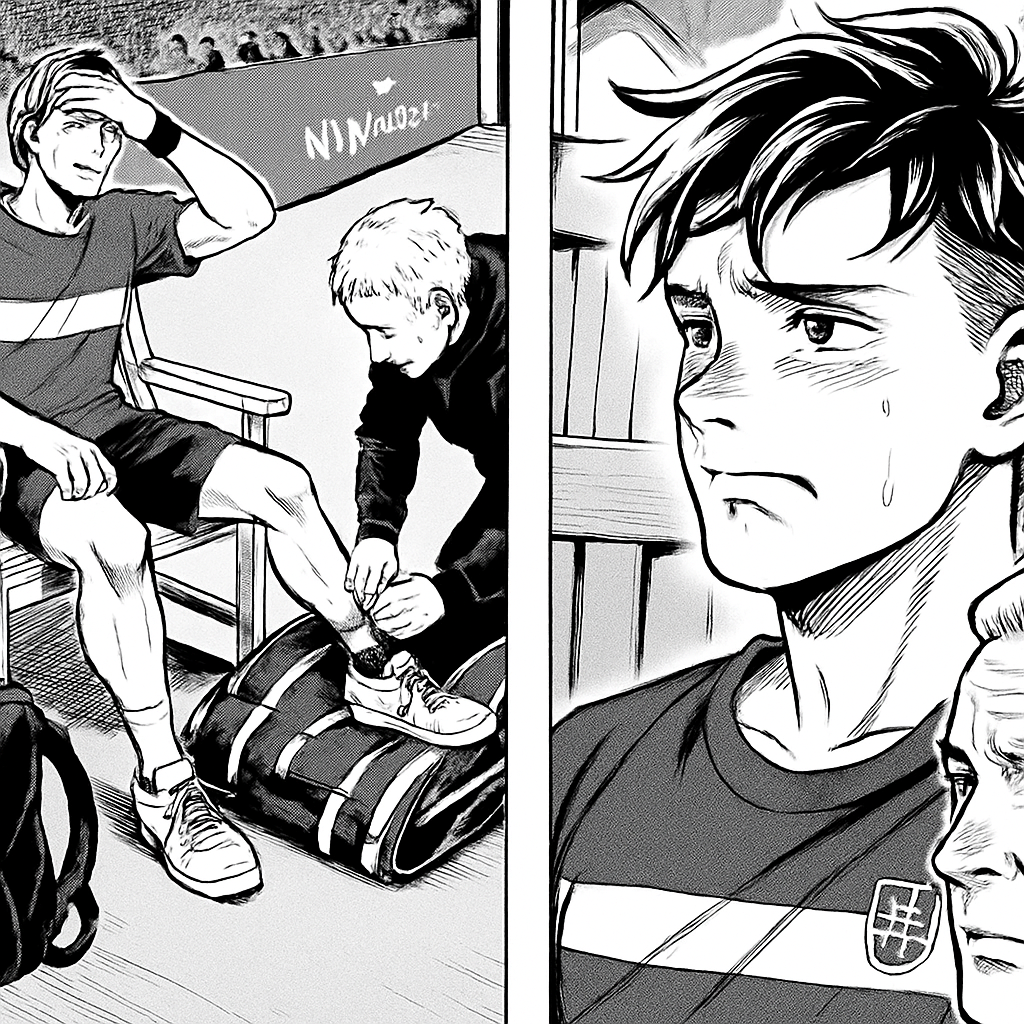STOCKHOLM — The tennis world watched in collective sympathy as Denmark's Holger Rune, the fiery young star, suffered a devastating Achilles tendon tear during his opening match at the Stockholm Open, an injury his former coach, Patrick Mouratoglou, has since labeled "the worst thing that can happen to a tennis player."
The incident occurred during Rune's first-round encounter against unseeded Australian Thanasi Kokkinakis. In the third game of the second set, with the match evenly poised, Rune lunged for a wide forehand, immediately collapsing to the court in agony. The 21-year-old could be seen sobbing into the court surface, his screams of pain audible in the hushed arena, before he was eventually helped to his feet and retired from the match.
In the aftermath, Patrick Mouratoglou, who coached Rune for over a year in a high-profile partnership that ended earlier this season, spoke candidly about the severity of the situation. He stated, "A torn Achilles is arguably the most feared injury in our sport. The recovery is long, arduous, and its shadow can linger over an athlete's career forever."
The Moment of Crisis in Stockholm
The Stockholm Open was meant to be a homecoming of sorts for Rune, who has Danish heritage and enjoys strong support in the Scandinavian tennis community. Instead, the event became the site of a personal nightmare. The non-contact nature of the injury is what makes it particularly alarming for athletes. Rune was not in a collision or a dramatic slide; he was executing a routine movement when the tendon gave way, a classic sign of an Achilles rupture.
Initial scans confirmed the worst fears: a full tear of the Achilles tendon. The typical recovery timeline for such a significant injury is between six to nine months, a substantial portion of an athlete's prime competitive years. This immediately puts his participation in the 2025 Australian Open in serious doubt and casts a long shadow over his entire upcoming season.
Mouratoglou, speaking from his academy in France, expressed his heartbreak for his former charge. "My heart breaks for Holger," he said. "He is an incredibly dedicated and passionate competitor. To see him struck down like this, at such a young age, is a brutal reminder of how fragile an athlete's body can be. The mental challenge now is as great as the physical one."
A Career on the Rise, Suddenly Halted
Before this catastrophic setback, Rune was in the midst of solidifying his place among the tennis elite. With four ATP Tour titles, including a Masters 1000 crown at the 2022 Paris Masters where he defeated Novak Djokovic in the final, Rune had broken into the world's top 5. His aggressive baseline game, fiery on-court demeanor, and undeniable talent had marked him as one of the primary threats to the established order.
The 2024 season, while not featuring a title win, had been a period of stabilization for Rune after bringing on board legendary coach Boris Becker late in 2023. Under Becker's guidance, he had shown signs of maturing tactically and emotionally. The injury not only halts this positive momentum but also raises questions about the future of his coaching team and his ability to return to the same explosive level of play.
The psychological impact cannot be overstated. Mouratoglou highlighted this, noting, "The loneliness of rehabilitation is profound. You go from the roar of a packed stadium to the silence of a treatment room. For a player like Holger, who feeds off competition and adrenaline, this will be the ultimate test of his character." The key challenges Rune now faces during his recovery include:
- Physical Rehabilitation: A grueling, monotonous process of rest, healing, and slow rebuilding.
- Mental Fortitude: Coping with the isolation from the tour and the fear of re-injury.
- Technical Adjustments: Potentially altering his movement patterns to protect the repaired tendon.
- Ranking Plunge: A significant drop in the ATP rankings is inevitable.
The Road to Recovery and Comeback
The path back to the top of the sport is long and uncertain. Modern sports medicine has improved outcomes for Achilles injuries, with athletes like Novak Djokovic and Juan Martín del Potro having successfully returned from serious wrist and elbow problems. However, the Achilles presents a unique challenge due to the immense load it bears in the stop-start, explosive movements of professional tennis.
Rune will likely undergo surgery in the coming days, followed by an extensive period in a protective boot. The early stages of rehab focus on restoring range of motion, followed by a painstakingly slow process of strengthening the calf and the tendon itself. The final and most critical phase will be reintegrating tennis-specific movements, from light hitting to full-intensity practice.
Mouratoglou ended his comments on a note of cautious optimism, urging the tennis community to be patient. "We must all support him now. He has the work ethic and the team around him to get through this. But we cannot rush him. The focus must be on a full and complete recovery, not a swift return. His long-term health is the only priority."
A Sobering Reminder for the Sport
Holger Rune's tearful exit in Stockholm is a stark reminder of the physical toll professional tennis exacts on its athletes. The packed calendar, coupled with the high-impact nature of the modern game, creates a perfect storm for such devastating injuries. As Rune begins his long journey back, the incident serves as a sobering moment for players, coaches, and governing bodies about the importance of athlete workload and injury prevention.
The tennis world now waits, hoping that one of its most electrifying young talents can overcome this monumental hurdle. The road ahead is daunting, but if Holger Rune can channel the same fighting spirit he displays on the court into his rehabilitation, the hope for a successful comeback remains very much alive. For now, the sport is left to ponder the fragility of its stars and to wish a swift and complete recovery for the Dane.

